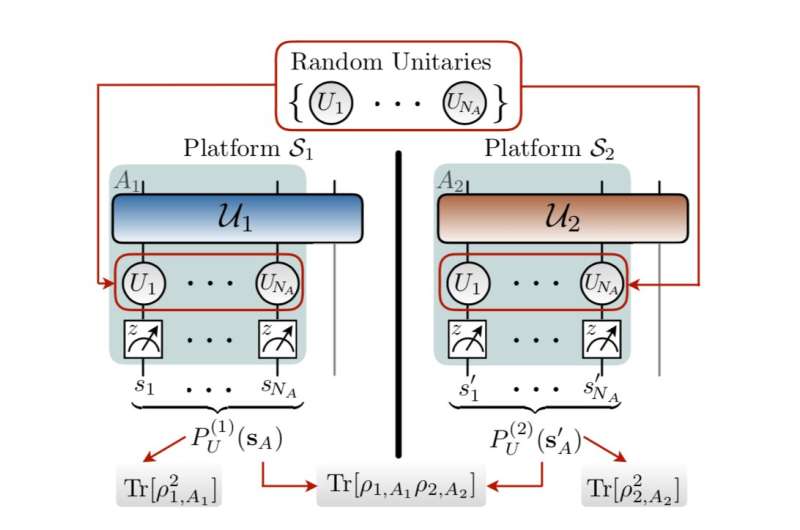January 15, 2020 report
Verifying the output from a quantum computer by comparing it to the output of another quantum computer

A team of researchers from the University of Innsbruck and the Austrian Academy of Sciences has developed a way to verify the output from one quantum computer by comparing it to the output of another quantum computer. In their paper published in the journal Physical Review Letters, the group describes developing and testing their efficient approach to verifying quantum devices.
As computer scientists move closer to creating a truly usable quantum computer, they are faced with a new problem—how to verify its results. Verifying the results of small quantum computers with just a few qubits is straightforward—compare the results with the output from a traditional computer. In a system with more qubits, however, this approach becomes unfeasible—it requires too much traditional computing power. The whole point of quantum computing, after all, is to solve problems that are currently unsolvable by traditional computers.
Another way to verify the results produced by one quantum computer is to compare them with the output from another quantum computer. Unfortunately, this is not as simple as it sounds due to the intrinsic randomness of quantum mechanics. Even identical quantum computers will not produce identical results. With quantum computers, it is the probabilities for the outputs they produce, rather than the outputs, that are the same.
Prior efforts to compare results from two quantum computers have typically involved reconstructing their quantum states. But this approach becomes infeasible as systems grow larger—it requires 4n measurements to estimate the states of systems with n qubits. Another approach involves using a parameter called a fidelity. It is defined as a parameter that describes the overlap between the output of two quantum computers. In this new effort, the researchers proposed a new way to use fidelity measures to compare the output from two quantum computers.
The new approach involves first preparing an initial state for both computers. Next, a random operation is applied to both initial states, and then both devices are measured. The randomness of the operations performed on the system ensures that all states are treated fairly, preventing the introduction of bad states that could bias the results. The researchers tested their approach on a 10-qubit trapped-ion quantum simulator and found it gave a high initial fidelity of 0.97. Over time, the fidelity decreased, unfortunately, due to complications involving many bodied states, falling back to 0.7.
More information: Andreas Elben et al. Cross-Platform Verification of Intermediate Scale Quantum Devices, Physical Review Letters (2020). DOI: 10.1103/PhysRevLett.124.010504
Journal information: Physical Review Letters
© 2020 Science X Network





















